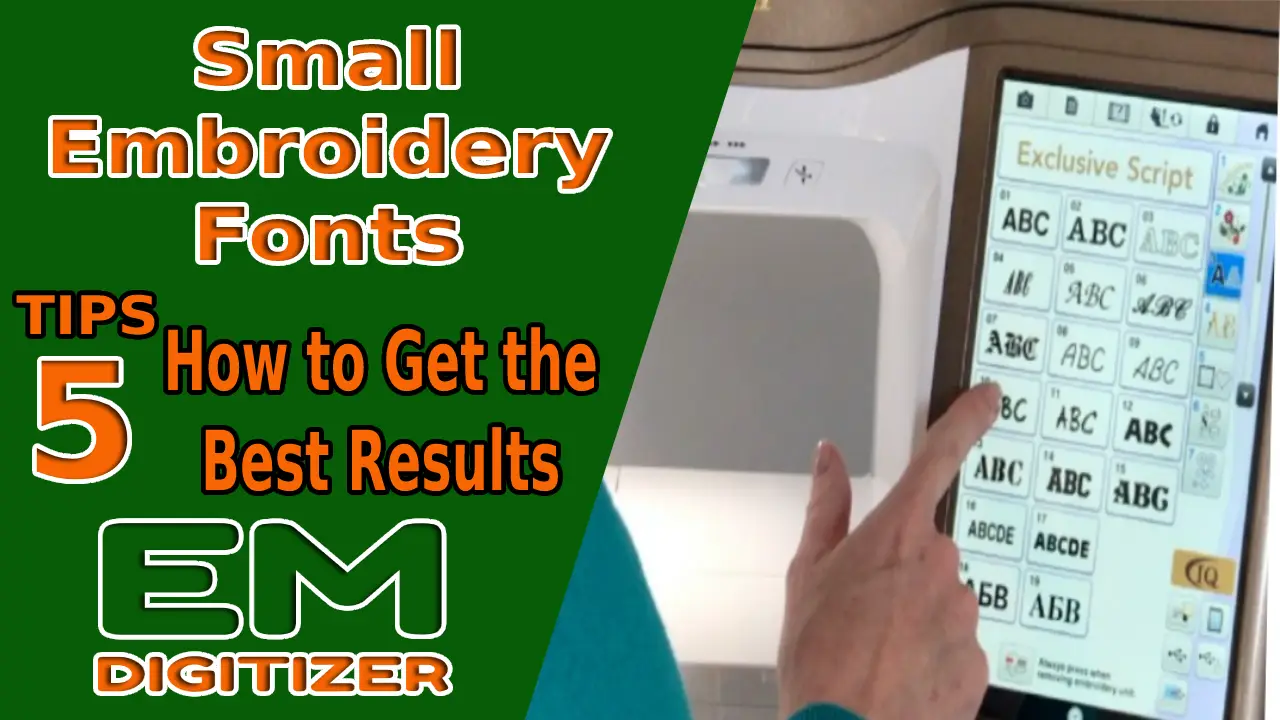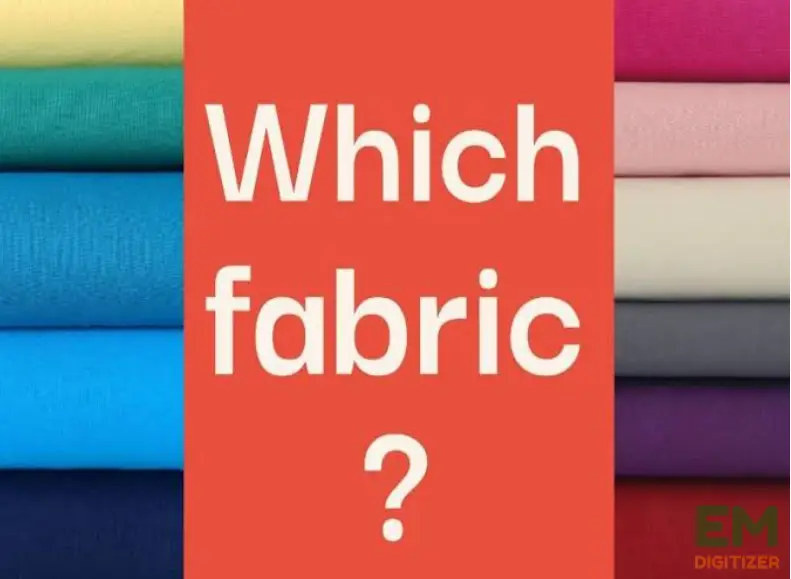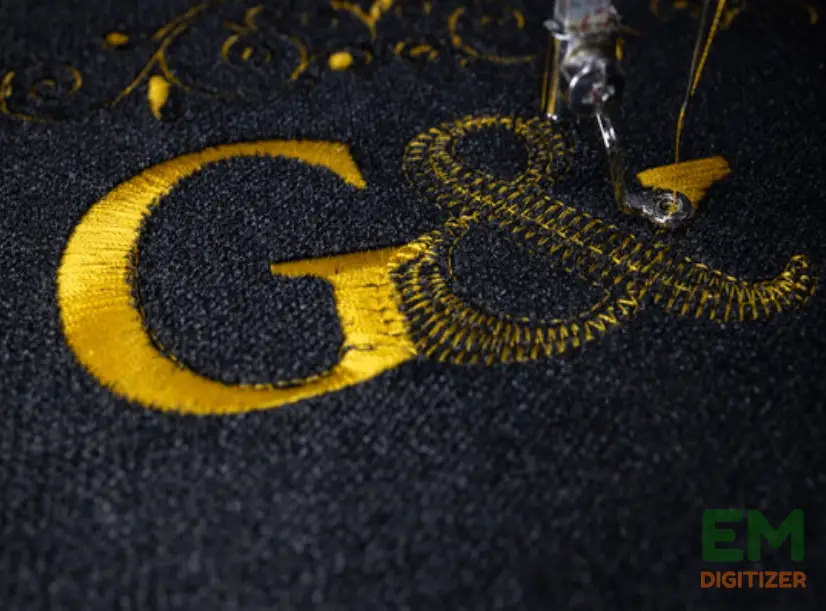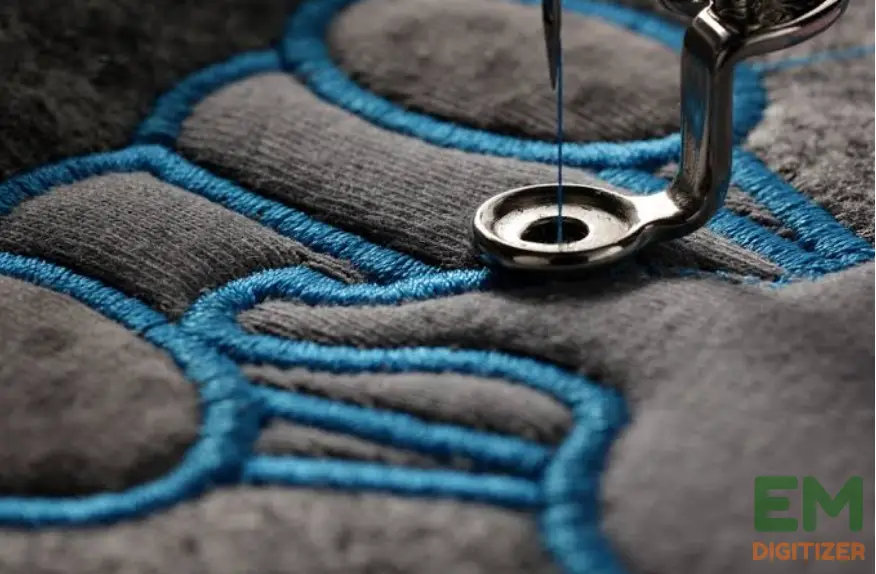Small Embroidery Fonts: 5 Tips on How to Get the Best Results

Once you feel confident in your ability to produce well-formed block and cursive letters at a standard size, you may discover a new challenge in the form of a miniature world of lettering.
However, there’s no need to worry, as we’re here to assist you in achieving optimal results when embroidering small letters.
If you are looking for embroidery digitizing services, EMDigitizer is one of the best embroidery digitizing companies. Providing all types of embroidery digitizing Services. I recommend you try digitizing services.
Order NowGet Free QuoteTable of Contents
What Are The Small Embroidery Fonts?
Tiny fonts in embroidery refer to small-sized fonts that are used for various purposes, including logos and patches.
The decision to use them depends on several factors such as the font, material used, the number of letters, and the desired size.

However, using small embroidery fonts can be challenging, as it requires precision and accuracy in stitching to avoid losing the clarity and legibility of the text.
Moreover, customers may request small embroidery fonts based on what they see on printed materials, and it becomes the responsibility of the embroiderer to guide them on the suitable fonts that will work best.
For more information about the top embroidery fonts for machine embroidery, click here.
What Are The Challenges Of Using Small Embroidery Fonts?
The small embroidery fonts can pose a challenge to embroiderers due to their size, which can make them difficult to work with.
Despite their small size, they require precision and accuracy during the embroidery process to ensure that the final product is high quality.
Additionally, the intricacy of the design can make it challenging to properly execute the embroidery, especially when using machines.
Some Of The Major Problems With Small Embroidery Fonts Are:
Embroidery fonts that are small in size can cause various difficulties.
Bird Nesting: These issues may include the creation of bird nests, which arise when a large number of stitches are concentrated in one place, causing the needle to get stuck and trap the thread.
Learn the reasons for bird nesting and how they affect embroidery creations.
Difficult To Read: Additionally, smaller stitches can make the text hard to read, especially when paired with fabrics that have the potential to shrink, such as cotton.
Risk Of Developing Holes: Moreover, if you have a lot of small stitches in a circular pattern, you may run the risk of creating holes in the fabric, which is undesirable, especially if the fabric is being used for a performance polo shirt.
With the right techniques and tools, embroiderers can achieve excellent results when working with tiny fonts.
This lesson explains how to use embroidery machines to fix holes that result from faulty sewing.
Working With The Small Embroidery Fonts- 5 Effective Tips
If you’re using small embroidery fonts, here are six things to keep in mind. But don’t worry, there’s also good news!
By making wise decisions about your font, fabric, and stabilizer, you can start stitching quickly. Let’s examine the different variables that can affect your stitch-out.
If you want to get knowledge about Digitizing Letters, then you can visit: Digitizing Letters | 4 Important Things
1- Types Of Fabrics Suitable For Small Embroidery Fonts
Pique knits are thick 3D knits that are breathable and often used for sports shirts. While they are sometimes referred to as “Honeycomb” weaves, they can be challenging to embroider because the stitches may sink into the fabric.
Tips:
- Soft and silky fabrics can also be problematic because they lack stability, and textured fabrics can distort the letters.
- It’s also advisable to avoid sheer fabrics such as netting.
- For embroidery purposes, it is ideal to use woven materials for small embroidery fonts that are well-stabilized as they provide greater stability, making it easier to embroider.
- This is especially true for tiny fonts.
If you want to enhance your knowledge of the best embroidery fabrics that are suitable for your projects and where to buy cheap fabrics online, continue to explore and learn.
2- Stabilizer & Underlay Types For Small Embroidery Fonts
To stabilize and support the small embroidery fonts, underlay is necessary. Here are some considerations to make when working with small fonts:
- A center-run underlay is the most effective for tiny fonts as it helps them sit on the fabric’s surface.
- However, a zigzag or edge run underlay is suitable for larger and thicker fonts.
- Knockdown stitches, which resemble tatami stitches, can be used as an additional underlay to knock down nap and fluff on fabrics like towels. However, fabric stabilizers should still be used.
- Edge run should never be used on small letters because there isn’t enough space.
Following is an overview of the best embroidery underlay stitches and their various types so you can choose the best one for your project.
Tip: Believe it or not, using an underlay with a lower density can lead to better results. Increasing the density beyond the normal for a font is unnecessary.
Stabilizer Guide
For improved stitching, it’s recommended to use multiple layers of stabilizer. At least two layers are suggested.
When working with a “no show” stabilizer, try turning one of the layers at an angle to achieve better results.
To get a comprehensive stabilizer guide used in machine embroidery projects, keep reading this blog post.
3- Consider The Best Lettering Style
When considering the style of lettering for embroidery digitizing, it is generally better to opt for less detail, particularly when creating small designs, as this usually leads to better results.
While it may be more enjoyable to use swirl or bold fonts, when selecting small letter fonts, it is advisable to stick to basic fonts as they tend to produce better outcomes.
Therefore, in this case, simplicity is key. It is recommended to choose fonts without serifs or any other decorative elements, such as swirls or curlicues.
Additionally, when selecting small fonts, block letters are preferable over cursive as they are more readable.
Tips:
- The smallest legible text size for embroidery is typically 4mm, although some 3mm sizes may also be possible.
- It is important to note that the smaller the font size, the more challenging it will be to read it.
- Furthermore, it is essential to keep in mind that the font size is determined by the largest letters (capital letters) and the lowercase letters are comparatively smaller.
The following are important factors to take into account while digitizing letters to get the best results.
4- Go With The Right Needle And Thread Type
If you’re embroidering small fonts, we recommend using a smaller needle size. This helps create smaller holes in the fabric when the needle passes through it.
However, the choice of the needle also depends on the type of material you’re embroidering on.
For woven fabrics, it’s best to use sharp point needles, which can pierce the fibers.
For knit fabrics, ballpoint needles are more suitable as they go between the fibers without cutting them.
To help you choose the ideal needle for your embroidery projects, here are some suggestions.
Consider The Best Thread Type And Weight
Using different sizes of embroidery thread can have an impact on the outcome of your project. Opting for a 60-wt thread will produce a better finish when using a smaller size.
To ensure satisfactory results, it’s advisable to create a sample before embroidering on your final garment.
To demonstrate the difference between 40-wt and 60-wt thread, we used a standard block font on cotton woven twill fabric with a medium tear-away stabilizer and compared the results using 75/11 or 65/9 needles.
- When using a thinner needle with 40-wt thread, you can notice a distinction in the font.
- However, switching to a 60-wt thread produces a much clearer result, as shown in the samples.
Want to learn about thread weights and which one to use for machine embroidery projects? Click here.
For optimal results, it’s recommended to use a smaller needle and a finer thread. When using a 65/9 needle, a 60-wt thread should be used.
- As a general rule, use a 75/11 needle for letters that are 5mm or larger, and a 75/11 needle with 60-wt thread or a 65/9 needle with the same thread for letters that are 4mm.
- Our recommendation is to operate your machine at a slower pace.
- Working slowly is crucial as it reduces the likelihood of the fabric bouncing back and results in more uniform stitching.
- The additional time invested in this approach will be worthwhile since it will lead to better outcomes.
5-Stitch Length And Stitch Density
We recommend keeping the density of the small embroidery font unchanged and using the pre-programmed digitized density designed for that font.
- A density under 0.25mm may not leave enough fabric for the stitches to hold onto, leading to holes.
- It’s like playing a game of musical chairs with too few chairs for the number of people playing.
To enhance the letters, you can try slightly increasing the pull compensation, but be careful not to overdo it, as this can make the embroidery difficult to read.
- It’s best to leave the stitch length at a minimum of 1 mm, and it’s always recommended to stick to the default stitch length of the font.
- The letter openings, such as in the center of “e” and other letters, must be at least 1 mm to prevent holes.
- Using low-quality embroidery fonts can ruin your project, so always choose high-quality embroidery fonts for the best results.
Note that the quality of the embroidery fonts plays a significant role in the final stitch-out result.
A Reminder!
With practice and patience, it’s possible to embroider small fonts. Keep in mind these essential points when using tiny embroidery fonts:
- Reduce your machine’s speed to minimize rebound pulling, resulting in more even stitching.
- Make sure to stabilize your fabric well. The smoother the surface, the better the stitching will be!
- Select the appropriate fabric. While woven fabrics are ideal, some materials like fleece, knits, fluffy fabrics, and sheer fabrics such as netting and satin may not be suitable for small fonts.
- The clarity of your results will increase with smaller needles and threads.
- To ensure legibility, choose an appropriate font rather than a fanciful one.
- Be patient and conduct test stitch-outs until you achieve the desired result.
Find out more about the tips provided in this blog for choosing the best embroidery fonts.
Conclusion
To best use small embroidery fonts, it’s important to select high-quality designs, adjust the density and stitch length to suit the fabric, and optimize the thread tension for each machine.
Additionally, keeping the embroidery design simple and avoiding overcrowding with too much text or small details can help ensure the final product is legible and visually appealing.
Additionally, we’re here to support and assist you in your embroidery endeavors until we meet again!
Small embroidery fonts are designs that are made up of small letters and are used in embroidery to add text to a design. These fonts are typically used for monograms, initials, and other small text designs.
When choosing a small embroidery font, consider the size of your design, the type of fabric you’ll be embroidering on, and the style of font that best suits your project.
Look for fonts that are designed specifically for small sizes, as these will typically have a better stitch density and be easier to read.
Here are some tips to use small embroidery fonts effectively:
- Choose a font that is legible even in a small size.
- Use a high-quality embroidery machine that can produce fine, intricate details.
- Use a stabilizer to keep the fabric taut and prevent puckering or shifting.
- Consider the color of the thread and the fabric to ensure the text is easy to read.
- Use a small hoop to keep the fabric stretched taut and in place.
- Practice on scrap fabric before embroidering on the final project.
Resizing a small embroidery font can be tricky, as it may cause the text to become illegible or lose its detail.
It is best to consult the instructions for your embroidery machine or software to determine the best method for resizing the font.
In general, it is recommended to resize the design proportionally to maintain the integrity of the font.
Small embroidery fonts can be used on various fabrics, but some fabrics may be more difficult to embroider on than others.
For example, fabrics with a high nap, such as velvet or corduroy, may require additional stabilizers to prevent the embroidery from sinking into the fabric.
It is best to test the embroidery on a small section of the fabric before embroidering the entire design.
If you have any questions leave the comments or you can visit our social channels for more updates regularly. We provide embroidery digitizing services if you need digitizing services feel free to contact us or email us.




